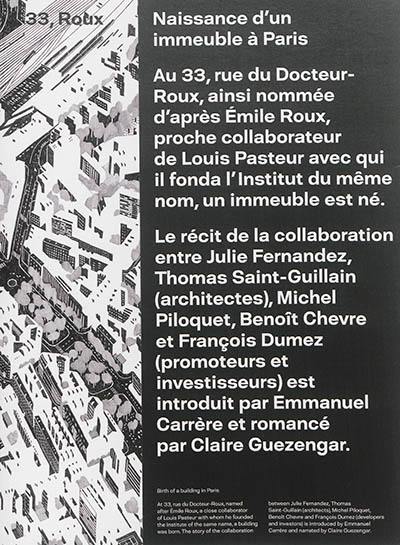
Paru le 25/04/2014 | Broché VI-105 pages
Tout public
introduction Emmanuel Carrère
Faire construire un immeuble à Paris est un défi, un risque et un rêve. Ce livre croise les regards d'architectes, d'écrivains, de photographes, d'artistes et bouscule les idées reçues.
Paris n'est pas une «ville musée» où l'audace en architecture est impossible. Paris n'est pas une «ville ghetto» où un promoteur ne réalise des logements sociaux que s'il y est contraint. Paris n'est pas une «ville figée» où l'architecte n'exprime jamais sa créativité.
Ce livre témoigne de l'entente harmonieuse qui a eu lieu au 33, rue du Docteur-Roux entre des architectes et un promoteur investisseur. Il démontre qu'il aura été possible à Paris, en 2013, de construire avec audace et sobriété, sans se réfugier dans une architecture molle ou consensuelle, ni se prendre trop au sérieux.
«Il y a deux choses dans un édifice, son usage et sa beauté. Son usage appartient au propriétaire, sa beauté à tout le monde». Victor Hugo
Creating a new building in Paris is a challenge, a risk and a dream. This book combines the views of architects, writers, photographers and artists to shake up preconceived ideas.
Paris is not a "museum city" where bold architecture is impossible. Paris is not a "ghetto city" where developers only provide social housing on the same level as private housing if forced to do so. Paris is not a "rigid city" where architects never express their creativity.
This book is proof of the harmonious understanding that existed at 33, rue du Docteur-Roux between the architects and the investors and developers. It demonstrates that in Paris in 2013, it was possible to build with audacity and restraint, without hiding behind a bland and consensual architecture, but without taking oneself too seriously.
"A building is made up of two things: its use and its beauty. Its use belongs to its owner, but its beauty belongs to everyone." Victor Hugo